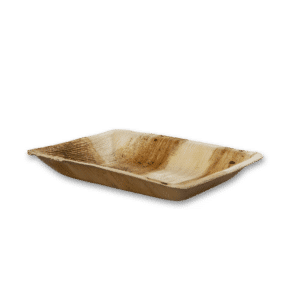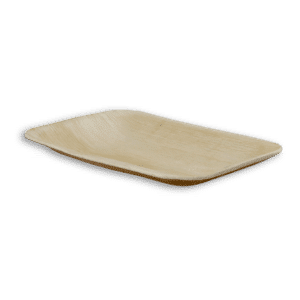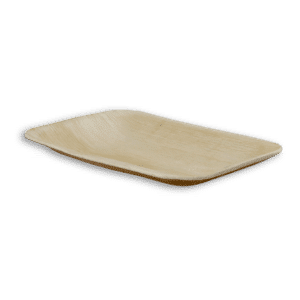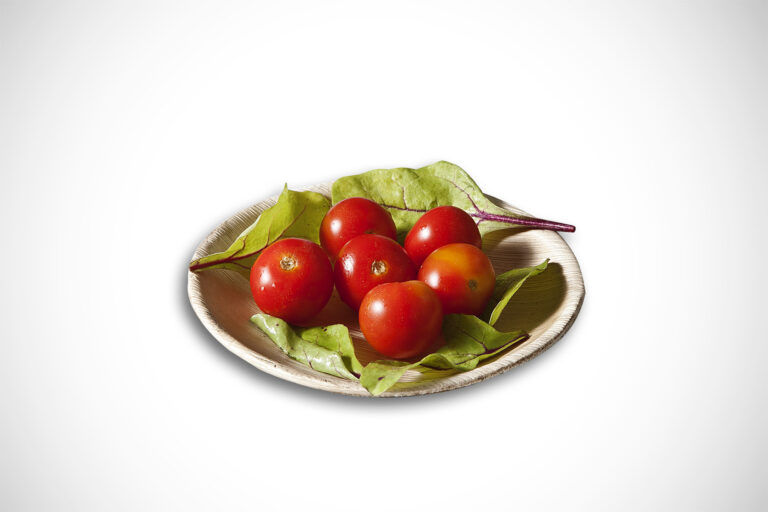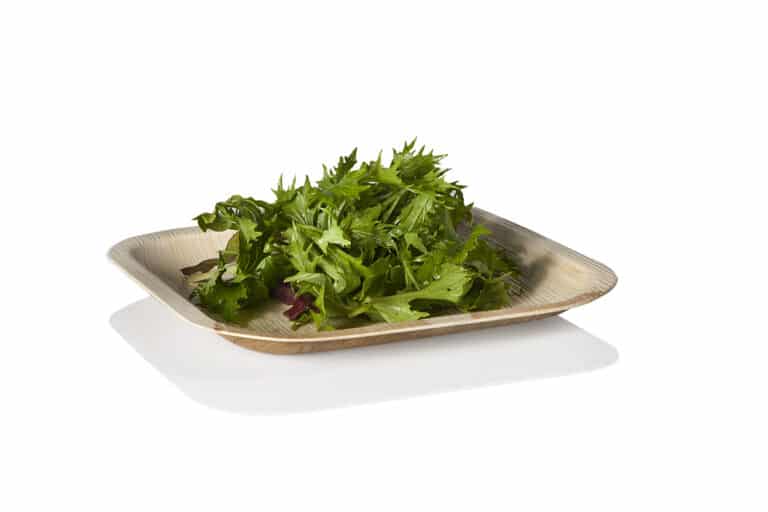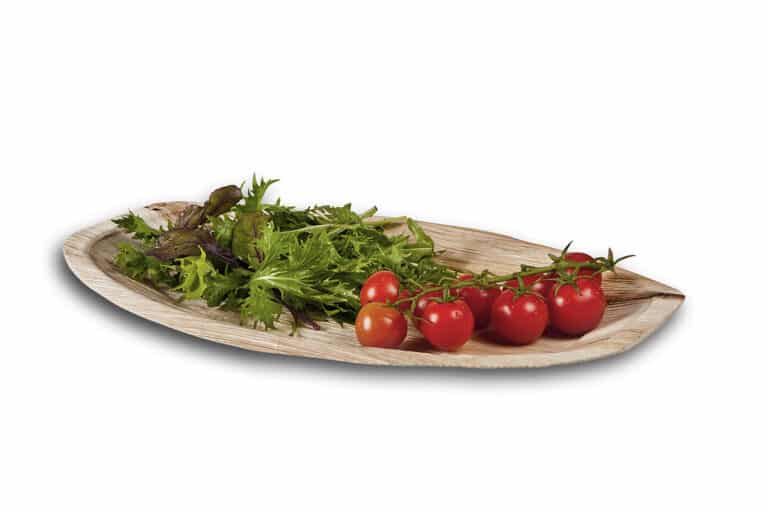Paper plates:
We are sure that many people think paper plates and paper products are not as bad to the environment as plastic products. These products sometimes have a “natural” and eco-friendly look. They many times have a brown matte color to help their “green” marketing. Actually it is exactly the opposite from Areca palm leaf plates. That the only thing not “green” with these plates is their natural beige color.
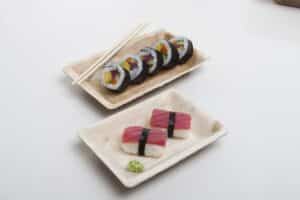
Let’s dig in a bit.
Not surprisingly paper products and paper plates are products made from wood pulp. Trees from which paper is made are either softwood of hardwood. With softwood coniferous trees forming about 85% of the trees whose wood pulp is vital for paper. Even if paper plates are made from recycled material, almost all paper originates from a forest somewhere.
Today, sustainability is an essential factor in the papermaking process. When harvesting trees careful consideration goes into improving and maintaining the biodiversity and sustenance of trees for future generations. Existing regulations, and economic conditions mean that urge forestry operations to must continually re-plant the ecosystem and invest in ongoing reforestation.
Other paper producing companies have explored other various options for getting the wood fiber needed to make large amounts of paper. Thinning to increase forest growth is one option to harvest the wood required to make paper. Thinning is a natural process. This involves cutting down less developed trees to provide more nutrients and light to the healthy trees. The thinning process is necessary to encourage the growth of robust trees and forests.
It’s vital to use and manage the forest responsibly. Many mill forestry operations now plant two new trees for everyone that they harvest for papermaking. Many utilize sawmill chips as well, versus large planks of wood. Some operations, because they are replanting constantly anyway, will harvest younger trees, which are easier to pulp.
Some good eco-friendly news
Other good news is that more and more companies are now following the FSC regulations. The Forest Stewardship Council (FSC) is an international, non-governmental organization. It is dedicated to promoting responsible management of the world’s forests. Since its foundation in 1994, FSC has grown to become the world’s most respected and widespread forest certification system. FSC’s pioneering certification system, which now covers more than 200 million hectares of forest, enables businesses and consumers to choose wood, paper and other forest products made with materials that support responsible forestry.
So some important aspects in the manufacturing process of paper products are indeed much more sustainable than in the past. This is good news. But still doesn’t change the fact that paper plates are still bad for the environment.
Many paper plates can not be recycled. At all. This is because of the stains on them and therefore take up huge space in the landfills. Other problems are that bleaches and chemicals are added to the wood pulps. This may pose a threat to the environment as the large quantity of chlorine used to produce bright white paper plates may cause minor or severe damage to living organisms. When leaked into the soil, water bodies or even inhaled when exposed to the air. Other times, paper plates are lined with aluminum foils. This is done to enhance their attractiveness and appeal to customers. Due to the aluminum foil, it becomes difficult for the plate’s component to break down within the short while it takes other paper to decompose.
![]()
![]()
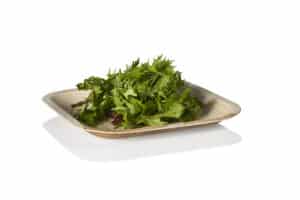
So what about composting paper plates?
The simple answer to this question would be, yes, it is possible. But, there is a big but! If the paper plates are coated with aluminum or plastic designs the answer to our question changes to NO. Unfortunately the majority of the paper plates and products are coated with aluminum or plastic as without this the paper plates and cups will hardly not hold liquids.
So even if some paper plates are compostable, the majority is not. Just this, for the average person, is too complicated, so de facto the answer if paper plates are compostable is NO.
Another problem with paper plates is that usually paper products are heavy. A truck carrying 100,000 paper plates would for sure weigh more than a truck carrying 100,000 Areca palm leaf plates or even plastic plates! We are saying this because when the truck is much heavier, it consumes much more oil and therefore much less eco-friendly.
So what is better? Plastic plates or paper plates?
It might surprise you that making and using paper plates takes 60% more material and generates 35% more greenhouse gas when compared to foam and plastic plates. For the production of paper there is a need to consume a high volume of water.
Single use plastic products and plates will fully break down after a few hundred years. Do you get this? Now think about the amount of plastic we as a humanity are using everyday day (in a year it is 150 million tons). Where do all these products go after we throw them away? Recycling? The numbers right now are talking of about only 9% of all plastic waste ever produced that has been recycled. Furthermore, 50% of all plastic produced is intended for single use.
Bottom line: both bad. We can’t choose from 2 bad options.
Lets conclude.
If you got here you know the answer. Paper plates are not eco-friendly. Yes, there are some advantages for paper plates compared to plastic plates. But in the end both are bad for our environment, each in their own bad way.
For any outdoor or indoor big event you would prefer biodegradable compostable and sustainable plates. The market is now full of eco-friendly alternatives. Some good, some OK and some are amazing solutions. To know why Areca palm leaf plates are by far the best option for you, read this blog here with all the details you need to know.


